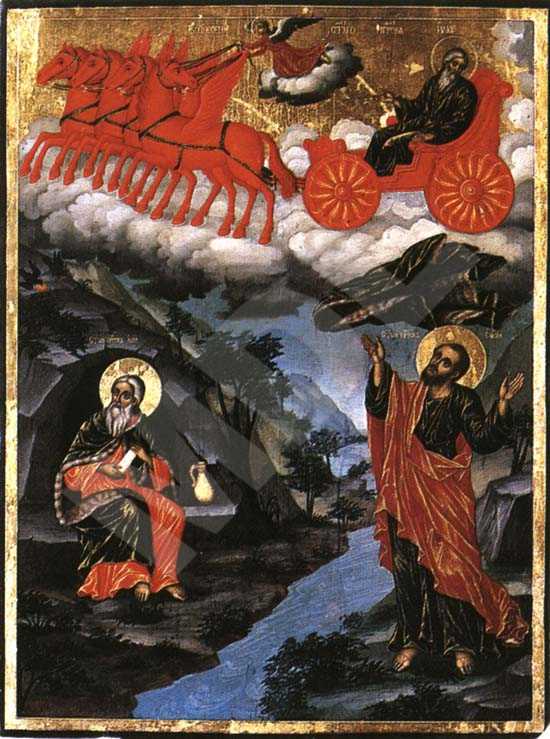The Ascension of the Prophet Elijah
Type:
Icon
Period:
From
the beginning of the
19 century
to
the end of the
19 century
Dimiter T. Molerov, born in 1780 in Bansko, son of Toma Vishanov the Moler. One of the best-known painters, a representative of the Bansko school of art, a disciple of his father, influenced by the art of Athos. Author of the murals of the naos in the St Archangels' paraclete in the Rila monastery, the murals in the Church of the Assumption of the Virgin in the Pchelino dependance. In 1840 and 1841 together with his son Simeon Molerov he paints the murals and the sponsors' portraits in St. Nicholas' and St. John of Rila's paracletes in the principal church in the Rila monastery. Among D. Molerov's major achievements in iconography are the following icons: St. Nicholas (1816) from St. Archangel Michael's church in the village of Leshko, Christ All-triumphant with Angels and Cherubim (1833), The Nativity and a Crucifixion from St Elijah the Prophet's church in the village of Usenovo. He has also worked in Belgrade on an invitation by Prince Milosh Obrenovich of Serbia. He died in 1870 in Bansko.
Dimmensions (cm):
44
/ 32
/ 2
Location
Country: Bulgaria
Province: Blagoevgrad
Other location: Nevrokop metropolis
Source
Country: Bulgaria
Province: Blagoevgrad
Other source: Nevrokop metropolis
Object identification notes
Dimiter Molerov (?)
Description
A traditional iconographic cliche in two levels. Painted down below is Saint Elijah's disciple Elisha, standing on the bank of the brook Khorath, a tributary of Jordan, with his arms thrown up and his eyes on the ascending into heaven prophet. Painted on the opposite, left side of the icon is a cave in a rocky slope, seated at the entrance of which is Saint Elijah with a roll in the hand, looking at two ravens, bringing him food. The background is a realistically painted mountainous landscape. In the upper level, on fluffy clouds, is Saint Elijah's red chariot of fire, drawn by four red and winged horses of fire, the reins of which are held by a flying angel. The saint is seated in the chariot with his eyes on Elisha. In the distance between the two of them is Saint Elijah's mantle. The graphic line-up, the colouring, and also the professional compositional treatment of the theme, betray the hand of a professional iconographer and a skilled painter.
Iconographical technique: Combined
with velaturas and "probaster" and with the use of the "wet into wet" method. The varnish cover is applied thinly and evenly.There is a gilding with gold-leaf along the frame, on the aureoles and in the places around Saint Elijah's chariot.
Base material: Wood
The icon's base is made of two softwood panels, with two inserted beams. The ground coat is of plaster, laid in a thin and even layer.
State, restoration traces and comments
There are destructions on the painting layer, as also on the frame, and mechanical damages on the gold cover in the icon's upper part and on the aureoles of the saints. There are traces of previous restorative interventions.


